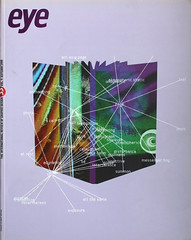Autumn 1999
Reputations: Bob Gill
Bob Gill
Alan Fletcher
Colin Forbes
Robert Brownjohn
Pentagram
Chermayeff and Geismar
‘I’ve never had a problem with a dumb client. There’s no such thing as a bad client. Part of our job is to do good work and get the client to accept it.’ Interview by Patrick Baglee
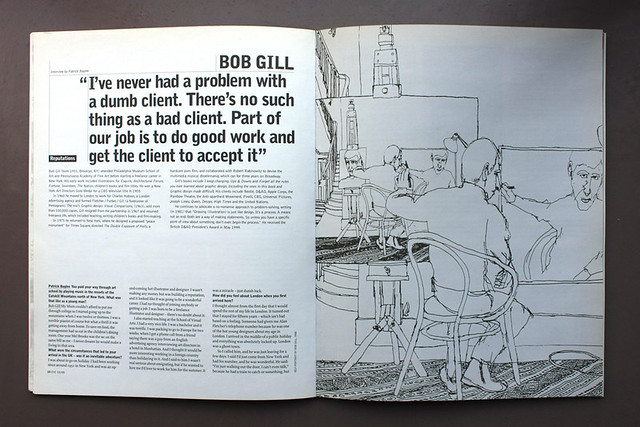
Bob Gill (born 1931, Brooklyn, NY) attended Philadelphia Museum School of Art and Pennsylvania Academy of Fine Art before starting a freelance career in New York. His early work included illustrations for Esquire, Architectural Forum, Fortune, Seventeen, The Nation, children’s books and film titles. He won a New York Art Directors Gold Medal for a CBS television title in 1955.
In 1960 he moved to London to work for Charles Hobson, a London advertising agency and formed Fletcher / Forbes / Gill (a forerunner of Pentagram). The trio’s Graphic design: Visual Comparisons, (1963), sold more than 100,000 copies. Gill resigned from the partnership in 1967 and resumed freelance life, which included teaching, writing children’s books and film-making.
In 1975 he returned to New York, where he designed a proposed ‘peace monument’ for Times Square, directed The Double Exposure of Holly, a hardcore porn film, and collaborated with Robert Rabinowitz to devise the multimedia musical Beatlemania, which ran for three years on Broadway.
Gill’s books include I keep changing, Ups & Downs and Forget all the rules you ever learned about graphic design. Including the ones in this book and Graphic design made difficult. His clients include Nestlé, D&AD, Apple Corps, the Rainbow Theatre, the Anti-apartheid Movement, Pirelli, CBS, Universal Pictures, Joseph Losey, Queen, Design, High Times and the United Nations.
He continues to advocate a no-nonsense approach to problem-solving, writing (in 1981) that ‘Drawing (illustration) is just like design. It’s a process. A means not an end. Both are a way of making statements. So unless you have a specific point of view about something, don’t even begin the process.’ He received the British D&AD President’s Award in May 1999.
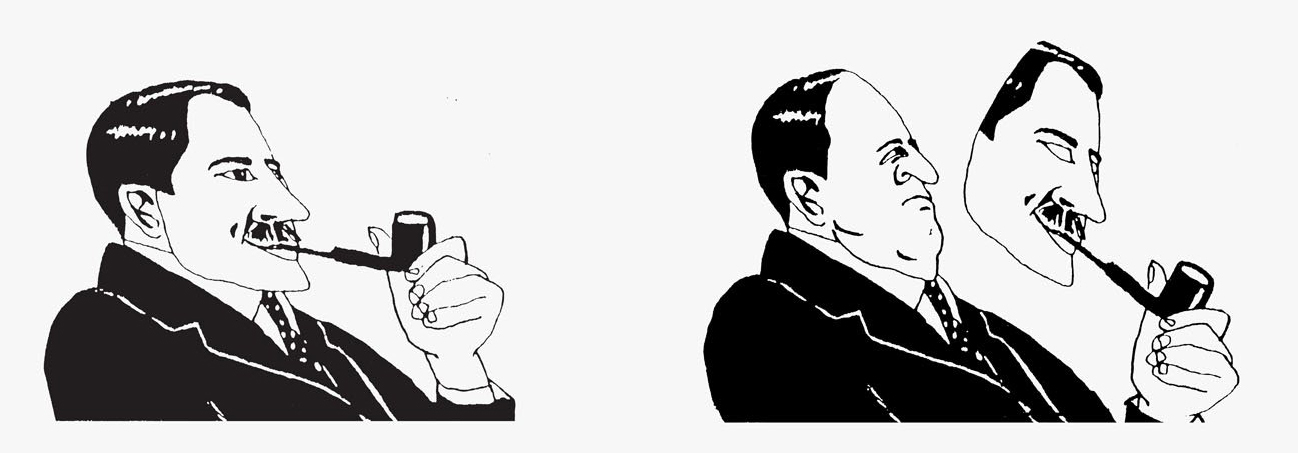
Patrick Baglee: You paid your way through art school by playing music in the resorts of the Catskill Mountains north of New York. What was that like as a young man?
Bob Gill: My Mum couldn’t afford to put me through college so I started going up to the mountains when I was twelve or thirteen. I was a terrible pianist of course but what a thrill it was getting away from home. To save on food, the management had us eat in the children’s dining room. One year Mel Brooks was the MC on the same bill as me – I never dreamt he would make a living in that area.
PB: What were the circumstances that led to your arrival in the UK – was it an inevitable adventure?
BG: I was about to go on holiday. I had been working since around 1951 in New York and was an up-and-coming hot illustrator and designer. I wasn’t making any money but was building a reputation, and it looked like it was going to be a wonderful career. I had no thought of joining anybody or getting a job. I was born to be a freelance illustrator and designer – there’s no doubt about it.
I also started teaching at the School of Visual Arts. I had a very nice life. I was a bachelor and it was terrific. I was packing to go to Europe for two weeks, when I got a phone call from a friend saying there was a guy from an English advertising agency interviewing art directors in a hotel in Manhattan. And I thought it would be more interesting working in a foreign country than holidaying in it. And I said to him I wasn’t real serious about emigrating, but if he wanted to hire me I’d love to work for him for the summer. It was a miracle – just dumb luck.
PB: How did you feel about London when you first arrived here?
BG: I thought almost from the first day that I would spend the rest of my life in London. It turned out that I stayed for fifteen years – which isn’t bad based on a feeling. Someone had given me Alan Fletcher’s telephone number because he was one of the hot young designers about my age in London. I arrived in the middle of a public holiday and everything was absolutely locked up. London was a ghost town.
So I called him, and he was just leaving for a few days. I said I’d just come from New York and had his number, and he was wonderful. He said: “I’m just walking out the door, I can’t even talk,” because he had a train to catch or something, but he said he would leave the key under the mat and that I was most welcome to spend the weekend and make myself at home. I got to know him and love him like a brother.
PB: You began work in a London advertising agency.
BG: It was very boring, a hack agency called Charles Hobson [later sold to Grey Advertising] and it was very confusing. I was absolutely intoxicated with London but at the same time (and though I didn’t do bad work) I was surrounded by people who were very uninteresting to me. And there was another strange thing: the Prime Minister of the time [Harold Macmillan] was making about £7500 a year and I was making £10,000. The owner of the agency thought that the Americans were just going to be the greatest gift to advertising.
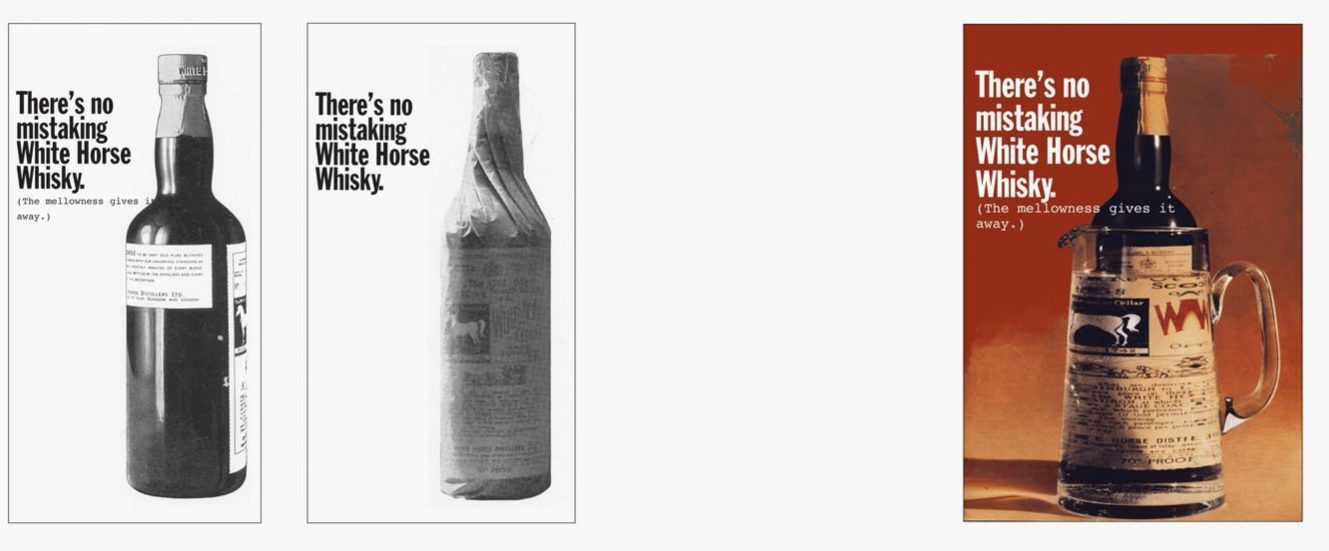
PB: There must have been some moments of relief?
BG: The agency had the White Horse Whisky account, and was on the brink of losing it. So I said: “I don’t drink whisky. I don’t know the first thing about whisky, so I can’t possibly do an ad until I know something more. I’ll have to go up to the distillery to find out about it.” I set off for Glasgow, and I sat down with a group of very dour executives who told me why White Horse (which is essentially exactly the same as Bell or Haig) is unique. But it’s a subtle thing of course, and you have to be a whisky drinker. “How so?” I asked.
And the executives all stood up and walked me down this long corridor through two huge doors. One of them told me that in here are samples of all the premier brands in Scotland, and only a real whisky drinker can possibly hope to tell them apart, “but we’ll let you try, and maybe you’ll begin to understand the difficulties of making these brands distinct.” The doors were heaved open, and I looked down this room to see a long table covered in a white cloth with a row of twelve glasses, each with a shot of whisky that had just been poured by a “concierge” – an ex-military man in a fancy uniform.
I was first into the room and so I looked the concierge in the face and mouthed: “Which one?” The concierge mouthed back: “Third”. I let the executives describe what to look for in the aromas and colour and so on. And then I picked up a couple of whiskies, sipped them, and then picked up the third glass and sniffed it. “That’s it,” I said, “no question.” The agency kept the account.
PB: How did you make the break from there to becoming involved with Fletcher and Forbes?
BG: I met Forbes through Fletcher – they were working in Forbes’s apartment as freelancers sharing expenses. This was after becoming disenchanted with the agency. It was a strange situation because if I had told Nicholas Kaye (the owner of the agency, who liked to think of me as his son) I was going to quit, as kind as he was and as generous as he was, he could have had me assassinated.
And then I had an inspiration. I went to him after Fletcher, Forbes and I decided to get together and I said: “Nicholas – let’s quit” and he said: “What are you talking about?” I said “Let’s get out of here and start a design office.”
Well, he was so moved by the fact I wanted to take him with me so he said: “No, you go. I’ll finance it and I’ll feed work to it from the agency – packaging and so forth, and I’ll be a silent partner – I don’t want my name on it.”
PB: What was the arrangement you reached?
BG: Fletcher and Forbes were very generous. They were prepared to give up 25 per cent, so instead of the three there would be four of us owning this entity Fletcher/Forbes/Gill, because this was the only way I could leave. So Kaye was a partner in the company. It was April Fool’s Day 1962 when we started, and it took us a year to get a telephone.
Amateurs ran London – it took months to get a carpet, a telephone or a typewriter. Then one day Nicholas called and said: “Bob, what’s going on? Already six months have gone by and there is no money coming in”, and so I said: “Nicholas, why don’t you resign? We’ll give you your £25 back and your investment with interest.” We borrowed the money from Barclays and by a miracle we were able to own ourselves. Of course today, Kaye would have owned 25 per cent of Pentagram.
PB: How did you get noticed in the 1960s?
BG: The 1960s were a time when there was a lot of hunger for names and so forth and so everybody seemed to get their share of publicity. You really had to hide not to become known. And of course Britain was recovering from the Festival of Britain, which was an awful period – just about the dopiest, most provincial stuff. And suddenly the 1960s hit – somewhat due to an American invasion. There was Brownjohn, and I came over and Bob Brookes, an art director who became a photographer. There were lots of American photographers – maybe half a dozen. Also because of the McCarthy era in America, a lot of film directors and producers were driven out of America following the blacklist. It was an amazing period for film. Look Back in Anger opened the 1960s – Saturday Night and Sunday Morning, The Loneliness of the Long Distance Runner – all these working-class films which were unheard of before.
All the photographers were working class: Donovan, Duffy, Bailey; and Jean Shrimpton was the model, Biba and Mary Quant were fashion, and then there was the English invasion of America with rock’n’roll – it was an amazing period on every level. It was just dumb luck that I was there.
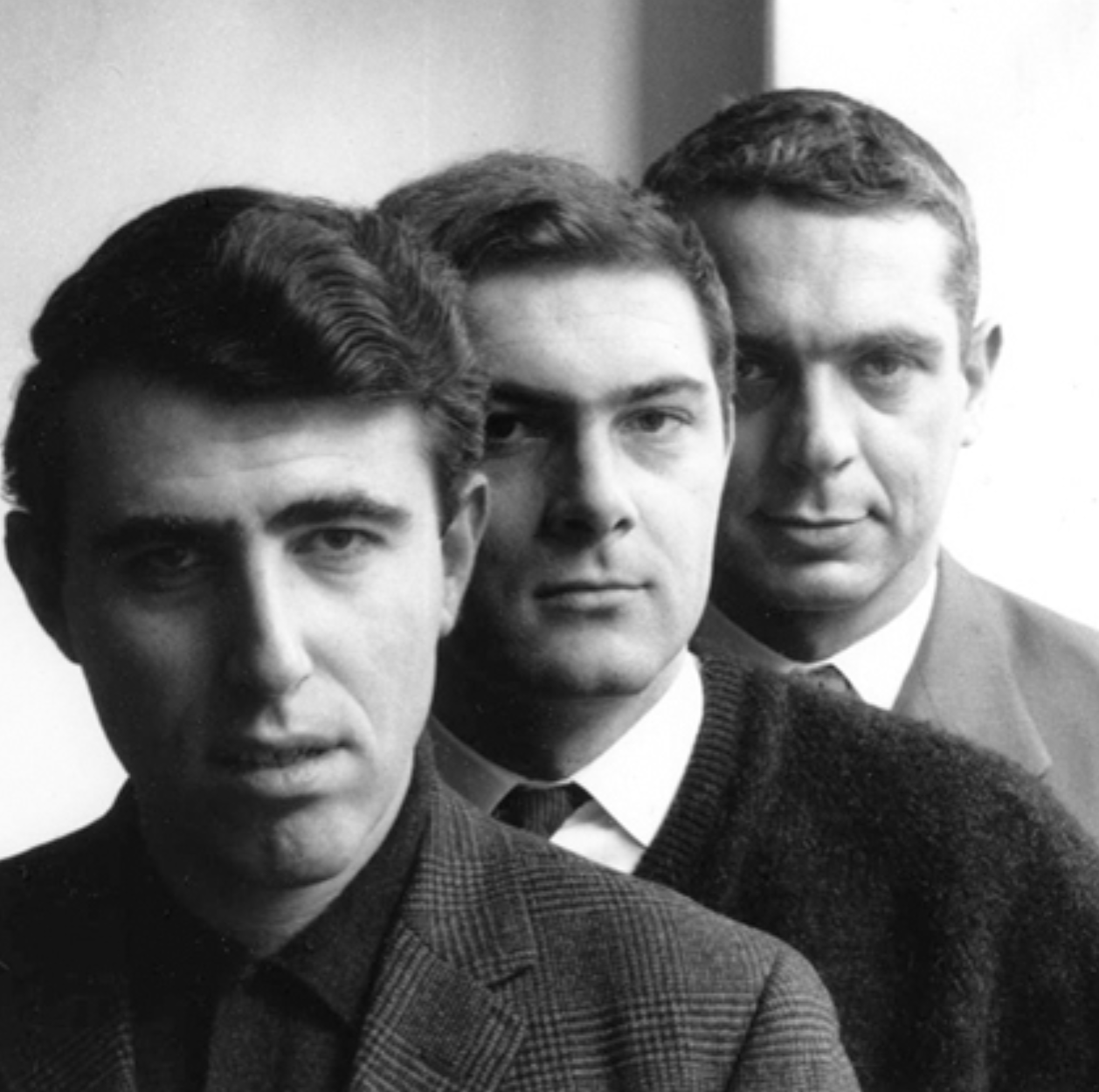
PB: What made the partnership with Alan Fletcher and Colin Forbes so successful?
BG: It was like shooting fish in a barrel. We had a great combination of the American interest in an idea with impeccable Swiss layout and typography. Not that I was helpless in that area or that they [Fletcher and Forbes] didn’t have great ideas, but there was no one in London who had these two strengths in combination. It was all over in about five minutes.
Now for me, in London, everything was like being on the moon, so everything I saw was new and fresh. I remember when I was at the Hobson agency, the reproduction of stuff was so bad in newspapers (the agency didn’t care about concept or typography – just reproduction) that they would use Scraperboard illustrations in line.
PB: Was this lack of care and attention frustrating?
BG: At the first meeting at the agency, where they accepted one of my ads for a box of chocolates, I said: “I want to get a nice photographer.” They said, “Oh no – we have to get a Scraperboard artist,” and they showed me what they meant and I said, “Jesus – this is awful.” Then I said, “Wait a minute,” and pulled a pound note from out of my wallet and said: “Let’s get this guy, someone who really knows about good line drawing,” and they said: “You must be joking.” I said: “No – get me the Bank of England!”
So I spoke to the engraving department and said: “Get me the chief engraver.” He was on holiday, but the number two was available. I told the guy where I worked and that I admired his work and wondered whether he would like to render a bar of chocolate for me. He said he’d never done anything but notes, but for the equivalent of more than a week’s salary, he got involved.
PB: How did the clients of that time differ from those of today? Were their expectations different? Did they understand what you could do?
BG: Look, this is the stuff that dreams are made of. Designers are always saying: “If we only had the right client, what beautiful music we could make.” But if they had the right client, the client wouldn’t need them. It’s amazing how designers are so naïve that they could want it both ways. I’ve never had a problem with a dumb unsophisticated client. I enjoy teaching – I believe in it – it’s part of the designer’s craft.
There is no such thing as a bad client – there are only bad designers and part of our job is to do good work and get the client to accept it. The worst thing that could happen as a designer is to go into a client’s office and see pre-Colombian art on the shelf and a Picasso on the wall. And I say Oh-oh, the guy’s wife is an art historian and he’s going to show the job to her, or he’s got an adviser to buy works of art and it’s a killer.
I love to start from scratch with somebody who couldn’t care less about design and knows nothing about it. Because then it’s a very interesting process. I’m not a con-man, I believe I’ve got something to contribute to what this client has to communicate and also I never presume to tell a client what to communicate. The fun is to invent a way of saying it in an interesting manner: the client is the expert in shoes, or butter. So there is a nice symmetry there. They are experts in one area and I know something about how to do it.
PB: You say that you have no preconceptions about “good design”.
BG: That’s absolutely true, but I hasten to add another truth. I could work with a client for two or three years and for one reason or another the relationship ends. This has happened a number of times. And then they hire another designer and you see the work that they do. And it’s as if they have had no contact with you whatsoever. So it doesn’t stick.
PB: Has your way of working been successful?
BG: I have a very high acceptance rate. In fact I think it’s easier to get my work accepted because it’s based more on reason than on simply saying “Isn’t this wild?” So I certainly am not unhappy about how victimised I’ve been by the philistines. The irony is that most people concerned with creating good design take their values from the surrounding culture – from Graphis magazine, say. So they’re all doing the same designs – which to me is boring. So if you are not concerned with what “good design” is and you let the design come from the idea, you get an original design.
PB: Having spent most of your life as a freelancer, how do you operate? Do you still enjoy it?
BG: Well, I have no thoughts of retiring. Established designers like myself are in a different position. By now there are hundreds of people in the world who know you, and some are interested in you, and even if they don’t call you once a week or once a month, if there are 500 of them and each calls you every three years – that’s a living. Sometimes I’m busy, and sometimes I’m not. Being in a fashion business, I feel lucky to have been so active for by-and-large the past 40 years.
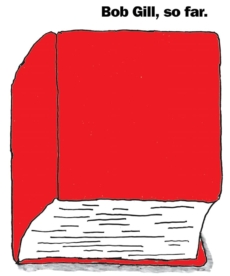
PB: You have placed your work and thoughts into a series of books – was this your gift to the industry, or something a little less philanthropic?
BG: One does a collection of work with some text to explain it a bit and make it a little richer for one reason alone – it’s my portfolio. It would be unseemly for someone so established to have a portfolio. If an insurance company rings you up and says: “We don’t understand what graphic design can do,” a twenty-year-old sends a portfolio.
An establishment designer has a reputation where you wouldn’t even dream of showing stuff – so in my case I say “Here’s a book.” Every few years I collect new work and old work that represents me well and I find a publisher and publish it.
PB: You’ve stepped out of education almost entirely of late. Why?
BG: Having taught for a long time, it just no longer interested me. A lot of things have happened in the past ten or fifteen years that are frightening. This current generation has grown up with the 30-second commercial, which has very bad implications. One is that because it is a glamorous job making them, very talented people make commercials – it’s a very “now” job. In the 1960s, the now job was to be a graphic designer – which is no longer the hot, sexy profession.
The result is that the people making these things can tell any story, however complicated, within 30 seconds, and therefore by implication anything that takes longer than 30 seconds is boring. People’s attention spans have been narrowed. People get bored quickly because of the skills of communication. But almost nothing meaningful can be communicated effectively in 30 seconds – only the trivial. People’s frames of reference have become very narrow. So the average student’s knowledge only extends as far back as a year, which is frightening. The combination of reduced attention span and reduced frame of reference gives you a country of idiots. Teaching them is a killer. The primary reason I have taught for 40 years is that I’ve been waiting for someone to teach me something. It has never been an obligation – if I see a doctor, I want him to be there because he enjoys being a doctor.
PB: Did you make any efforts to try and change this state of affairs?
BG: I was once so frustrated with some students (and they were no worse or better than any others) because they would spend so little time on a job: they were never trained to work on anything for a long time. So I said: ‘Bring in a job that took eight hours to accomplish. Don’t tell me it took seven-and-a-half hours to think of and half an hour to complete. I want to see physical evidence of eight hours’ effort.’ Well, the results were wonderful, because they had never spent eight hours on anything.
PB: You’re currently working on Unspecial Effects for Graphic Designers. What is the aim of the book?
BG: We can’t compete. We can’t compete with video makers and special effects. It’s pathetic what print can do compared with the razzle-dazzle people see around them. But luckily I was never interested in special effects, even before there were special effects. I’m not someone who’s been on the cutting edge either when I started or now. I’m interested in reality. I’m interested in looking at things and saying things about them the way they are. Each one of my jobs is about things people could have seen themselves had they bothered to look.
Now, one can exaggerate. It would be boring to limit yourself to images that were literally there. But there is a difference between reality exaggerated and a special effect in a video that says nothing about the human condition. And these people are not interested in the human condition but about shocking. I shock my clients by saying: “Hey – have you ever noticed this before?” That’s about reality, and nothing to do with Arnold Schwarzenegger.
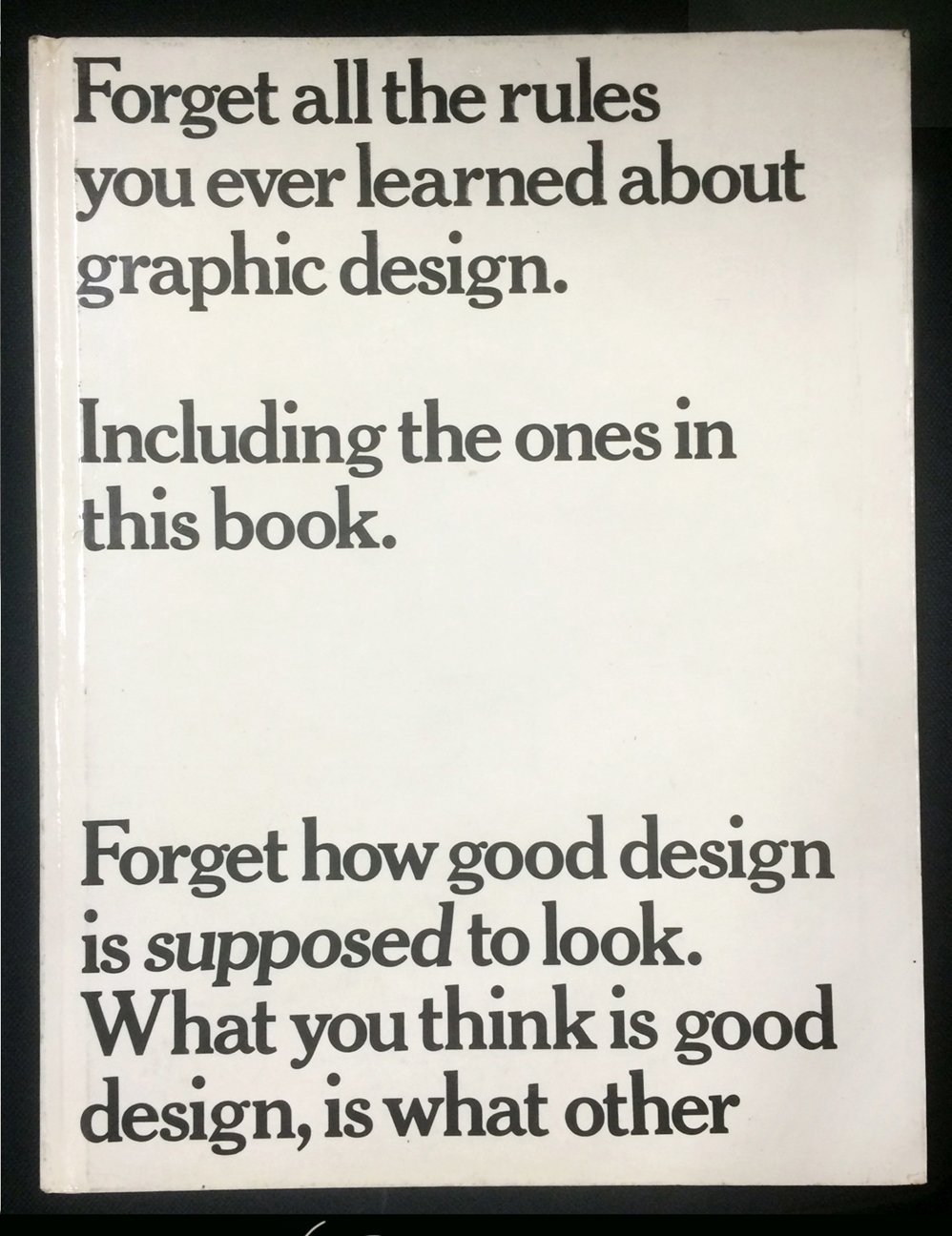
PB: So how have computers changed what you do?
BG: The computer has revolutionised the graphic designer. Any job that had to be printed in the past was a mystery. Insurance companies didn’t know anything about the mystery of design and print, so they went to a design agency and paid a lot of money. It was a magical mysterious thing. Today for a few quid you can buy a programme and a typist can do an annual report that’s adequate for 85 per cent of companies because it meets basic requirements. Well this is serious, because all of a sudden we can’t just get away with doing something that just works. One of the things I do that a computer can’t do is think. Layout is not the imperative anymore. We have to think and do what the computer can’t do. This is not new to me. This was always my value and this was always of interest to me.
PB: You enjoyed an on-and-off working relationship with Robert Brownjohn. What was he like?
BG: We all started in New York around the same time in 1950 or ’51. Brownjohn went a different route to me to set up an agency called Brownjohn Chermayeff and Geismar, which was a precedent of Fletcher Forbes Gill – a collaboration of three like-minded designers. I went the route of freelance but we were in the same age group and we respected each other’s work. I ended up going to England while Brownjohn had a serious drug problem in New York. He wrote to me and said would I get him a job in England? I said if he could lick his drug problem, he could certainly find a job. He had a dazzling portfolio and was one of the best designers of his generation.
PB: Did your friendship continue once he had arrived?
BG: We weren’t very close in England. He lived in this drug world and then he became a heavy drinker and gained about 100lbs and I think he liked the idea he was much larger than life. When he died, I felt it was my duty to rush over to his studio to preserve his work. He’d left Cammell Hudson and Brownjohn and was freelancing again. I wanted to gather his work but his studio was unbelievable.
You never saw such chaos – half-eaten sandwiches, odd socks. But I didn’t care what sort of a state he was when he went – he was a designer before he was an addict which meant that somewhere there would be a clean version of every job neatly filed away so that when he went to the studio in the sky his portfolio was ready. From the mid-1950s to mid-1960s, his work was in transition, so there wasn’t much stuff there. After his death I gave an evening for him at the American Embassy where 200 or so people came and reminisced about him. He was a character. He was the most interesting job he ever did.
PB: Does praise matter to you?
BG: I’ve had two compliments that I treasure most of all. One was from Brownjohn, who said he was the “second-best designer in England”.
And the other was from Paul Rand, whom everyone, including me, calls the President, because he was the father of modern American graphic design. He told me I was his favourite designer. I value those comments very much.
PB: How’s your piano playing?
BG: Well, the fun of being a jazz piano player is in playing with other people, but I don’t play with anyone and I haven’t played in a long time. I hardly touch the piano. And I was never any good. For some reason, from the age of six or seven, I always wanted to be a freelance graphic designer.
Patrick Baglee, writer, Real Time Studios, London
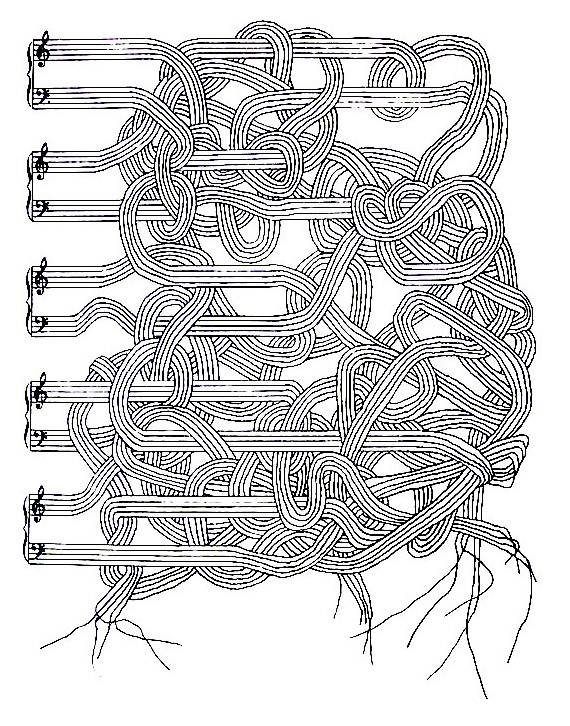
First published in Eye no. 33 vol. 9, 1999
Eye is the world’s most beautiful and collectable graphic design journal, published for professional designers, students and anyone interested in critical, informed writing about graphic design and visual culture. It is available from all good design bookshops and online at the Eye shop, where you can buy subscriptions, back issues and single copies of the latest issue.

